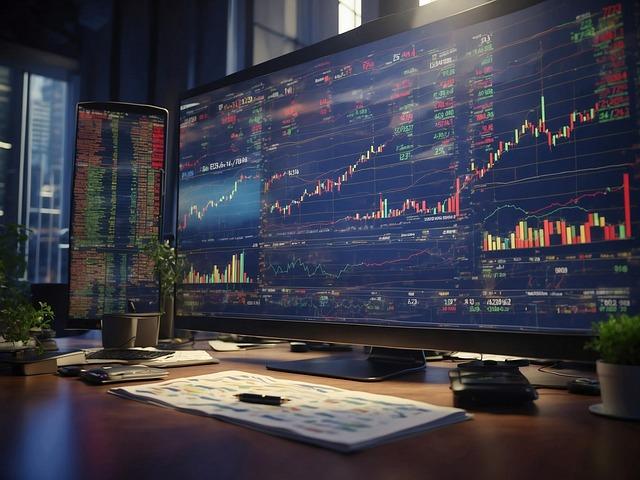
In the digital era, technological innovation is revolutionizing the way financial markets operate. One of the most transformative trends in recent years is the integration of artificial intelligence (AI) into trading. AI-powered trading platforms are changing the dynamics of investment strategies, enabling both individual and institutional investors to leverage advanced computational techniques for higher returns, minimized risks, and faster execution. This article delves into the mechanisms behind AI trading, its evolution, the benefits and limitations, and why it's becoming a critical tool for investors aged 35 and older.
What Is AI Trading?
Definition of AI Trading
AI trading involves the use of machine learning algorithms, predictive analytics, and other branches of artificial intelligence to make data-driven trading decisions. Unlike traditional systems based on static rules, AI models can learn from new data, improve their predictions over time, and adapt to dynamic market conditions.
Key Components of AI Trading Systems
-
Machine Learning Models: These models learn from historical trading data to recognize profitable patterns and trends.
-
Big Data Analytics: AI systems process and interpret massive datasets, including structured (market prices, volume) and unstructured (news, tweets) information.
-
Natural Language Processing (NLP): NLP allows AI to interpret news articles, analyst reports, and social media chatter to assess market sentiment.
-
Automated Execution Tools: AI can execute trades in milliseconds based on real-time insights, reducing latency and increasing accuracy.
How AI Trading Works
Data Collection and Preprocessing
AI trading systems begin by aggregating data from multiple sources:
-
Market data (prices, volume, trends)
-
Company financials (earnings reports, balance sheets)
-
Economic indicators (interest rates, inflation)
-
Sentiment data (news feeds, social media)
This data is cleaned and standardized to ensure accuracy and consistency.
Model Training and Backtesting
Trained on historical data, AI models identify patterns that are predictive of future movements. The performance of each model is tested (backtested) using past data to validate its accuracy and reliability before it is deployed in real trading.
Real-Time Execution
Once deployed, these models operate in real-time, analyzing incoming data streams and executing trades automatically when specific conditions are met. This allows for faster decision-making compared to manual methods.
Evolution of AI in Financial Markets
Phase 1: Algorithmic Trading
Initial automation in trading involved rigid, rule-based systems. These could execute trades based on fixed conditions but lacked flexibility.
Phase 2: Machine Learning Integration
With machine learning, trading systems became capable of learning and evolving with new data, offering more nuanced predictions and strategies.
Phase 3: Deep Learning and NLP
Deep learning models began handling complex tasks such as image and speech recognition. In trading, they help interpret complex relationships in data, while NLP adds the ability to process textual sentiment from financial news or even CEO speeches.
Phase 4: Quantum AI and Predictive Models
Quantum AI blends quantum computing with AI, allowing for faster computations and deeper analyses. This combination is setting the stage for a new generation of high-performance predictive models.
Benefits of AI Trading
Enhanced Accuracy
AI systems identify micro-trends and subtle indicators that humans might overlook. This leads to more informed and precise trades.
Speed and Efficiency
AI can process data and execute decisions in milliseconds, allowing traders to capitalize on even the briefest of opportunities.
Risk Mitigation
By continuously monitoring the market and applying risk management rules, AI trading systems can automatically adjust exposure in volatile situations.
Cost Reduction
AI reduces reliance on large teams of analysts and manual researchers, significantly cutting operational expenses.
24/7 Operation
AI bots can trade around the clock without fatigue, making them ideal for markets like cryptocurrency, which operate continuously.
Top AI Trading Platforms
Quantum AI
Quantum AI is an advanced trading solution that uses the principles of quantum computing to enhance AI algorithms. It’s known for its high-speed data analysis and predictive power.
Key Features:
-
Real-time monitoring of global financial markets
-
User-friendly interface for both novice and seasoned traders
-
AI algorithms optimized by quantum computing for enhanced accuracy
-
Customizable risk tolerance settings
Related link: trading AI
quantumaipiattaforma.it
This platform offers a seamless experience with powerful AI trading tools, especially designed for European investors looking to automate their trading portfolios.
Features:
-
Multiple asset class support (stocks, forex, crypto)
-
Intuitive dashboard for trade analysis
-
Multilingual support and GDPR compliance
-
Real-time trading alerts
Related link: quantumaipiattaforma.it
Getting Started with AI Trading
Step 1: Choose a Reputable Platform
Ensure the platform is regulated, offers strong security features, and has positive reviews from actual users.
Step 2: Understand the Basics
Before diving in, understand core financial principles such as risk management, asset allocation, and basic trading strategies.
Step 3: Account Setup and Verification
Sign up, verify your identity (KYC), and link your funding sources securely.
Step 4: Strategy Configuration
Use the platform's AI tools to select or customize a trading strategy that matches your financial goals and risk appetite.
Step 5: Monitoring and Adjustment
Even with automation, regular oversight is essential. Use dashboards and performance metrics to fine-tune your strategy.
Real-World Applications of AI Trading
Stock Market
AI analyzes vast amounts of stock data to identify undervalued or overvalued stocks, optimize entry and exit points, and detect insider trading signals.
Forex Market
AI-powered forex bots monitor currency pair fluctuations and execute trades based on interest rate changes, political news, and macroeconomic trends.
Cryptocurrency
Given its 24/7 nature and volatility, the crypto market benefits significantly from AI trading. Algorithms can respond instantly to rapid market changes.
Commodities and Futures
AI analyzes supply chain data, geopolitical events, and weather forecasts to make informed trades in commodities like oil, gold, or agricultural products.
Common AI Trading Strategies
Momentum Trading
This strategy identifies securities that are moving significantly in one direction and attempts to ride the momentum until signs of reversal.
Arbitrage
AI identifies price discrepancies of the same asset in different markets or exchanges and profits from buying low and selling high instantly.
Mean Reversion
AI models track historical averages and trade on the assumption that prices will revert to their mean after a deviation.
Sentiment Analysis
By processing millions of articles, tweets, and forums, AI can gauge public sentiment and use it as a leading indicator for market moves.
Risks and Limitations of AI Trading
Overfitting of Models
Over-optimized models may perform well during testing but fail in live markets due to their inability to generalize.
Lack of Transparency
AI systems, especially deep learning models, often lack explainability, making it hard for users to understand why a trade was executed.
Data Dependency
AI models are only as good as the data fed into them. Inaccurate, biased, or outdated data can lead to incorrect predictions.
Regulatory Challenges
High-frequency trading by AI systems can lead to flash crashes or market manipulation, raising concerns among regulatory bodies.
Legal and Ethical Considerations
Adherence to Regulatory Standards
Investors and platform developers must ensure AI trading complies with financial regulations such as MiFID II in Europe or SEC rules in the U.S.
Responsible AI Use
Ethical concerns include data privacy, unbiased model training, and avoiding exploitation of uninformed retail investors.
The Future of AI in Trading
Integration with Quantum Computing
Quantum AI is expected to handle complex models and real-time data analysis on a much larger scale than current systems.
Rise of AI Hedge Funds
Hedge funds are increasingly managed by AI algorithms capable of making strategic decisions with minimal human intervention.
Personalized AI Trading Bots
Future systems will allow users to design bots based on personal goals, risk profiles, and investment horizons.
Mass Adoption and Accessibility
Retail investors will gain access to AI tools previously reserved for institutional traders, democratizing advanced trading capabilities.
Conclusion
Artificial Intelligence is rapidly becoming a pillar of modern trading strategies. Its ability to process immense volumes of data, execute trades at lightning speed, and reduce human error makes it a game-changer for investors.



